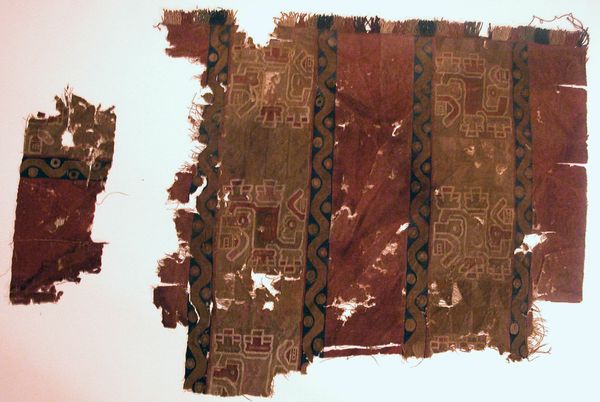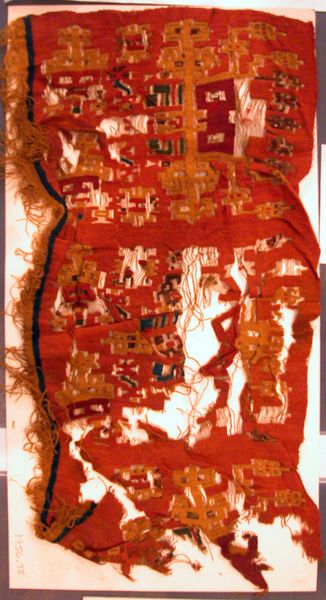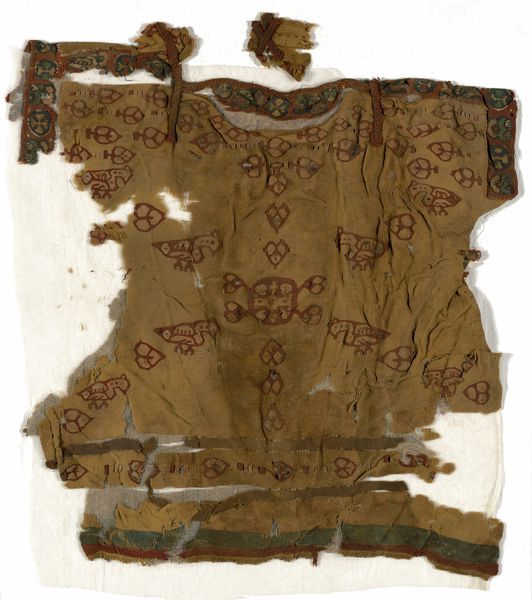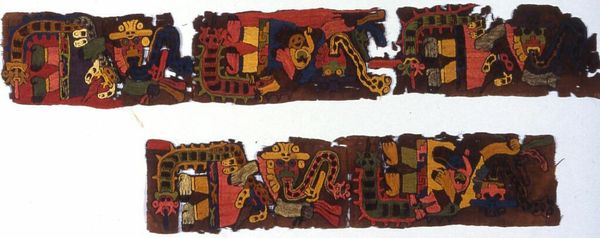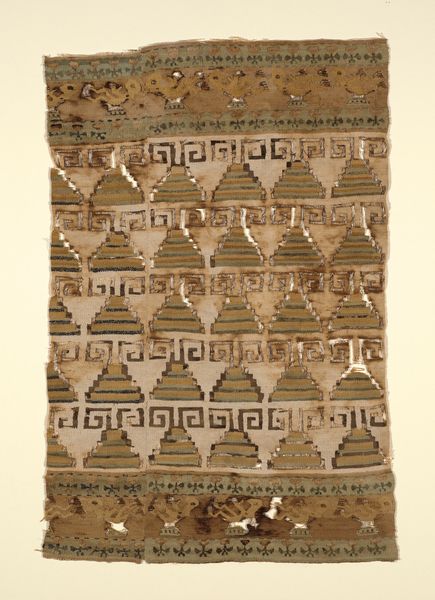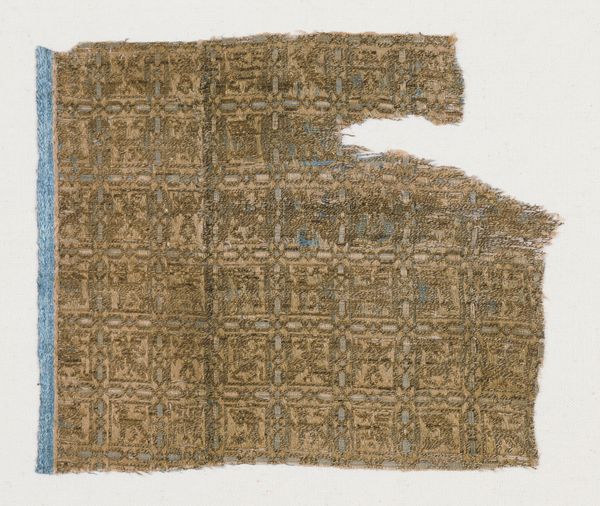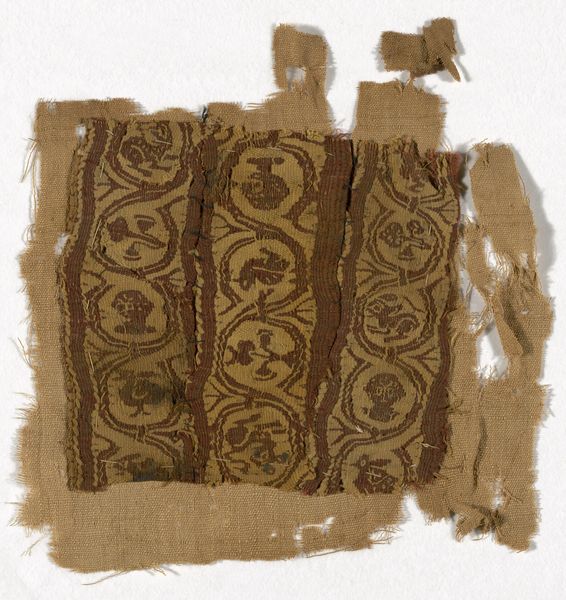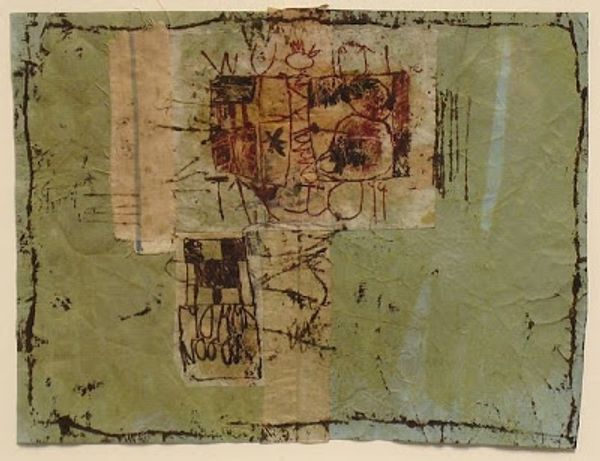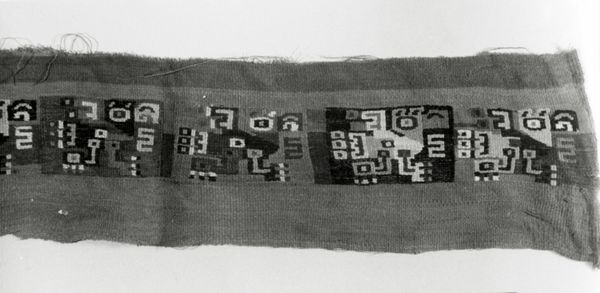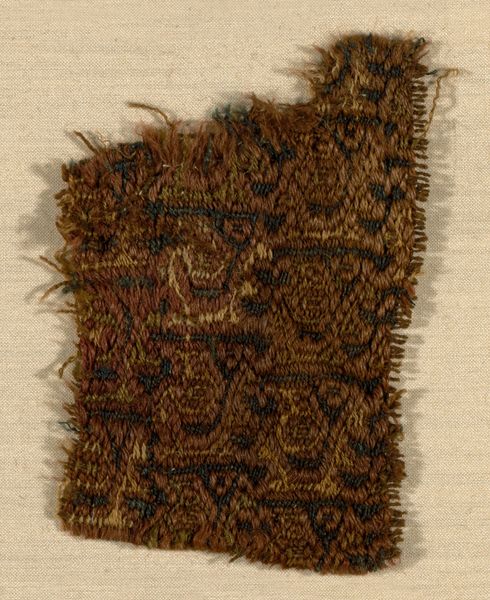
fibre-art, weaving, textile, cotton
#
fibre-art
#
weaving
#
textile
#
geometric
#
cotton
#
indigenous-americas
Dimensions: 94 × 54 cm (37 × 21 1/4 in.)
Copyright: Public Domain
This textile fragment was made by an artist from the Wari culture, sometime between 600 and 1000 AD. It’s a glimpse into the visual language of a society that flourished in the highlands of what is now Peru, before the rise of the Inca Empire. The Wari were master weavers, and textiles held immense social and political importance. The geometric patterns and abstract figures you see here weren't just decoration. They were a form of communication, conveying complex ideas about social status, religious beliefs, and political power. Textiles like this were often used in rituals, as offerings, or as symbols of authority. They might have been worn by elites or used to adorn sacred spaces. Archaeological research, combined with an understanding of Andean cosmology, can help us interpret the possible meanings behind these images. Art history reminds us that even fragments like this one can speak volumes about the social structures of a distant past.
Comments
No comments
Be the first to comment and join the conversation on the ultimate creative platform.
